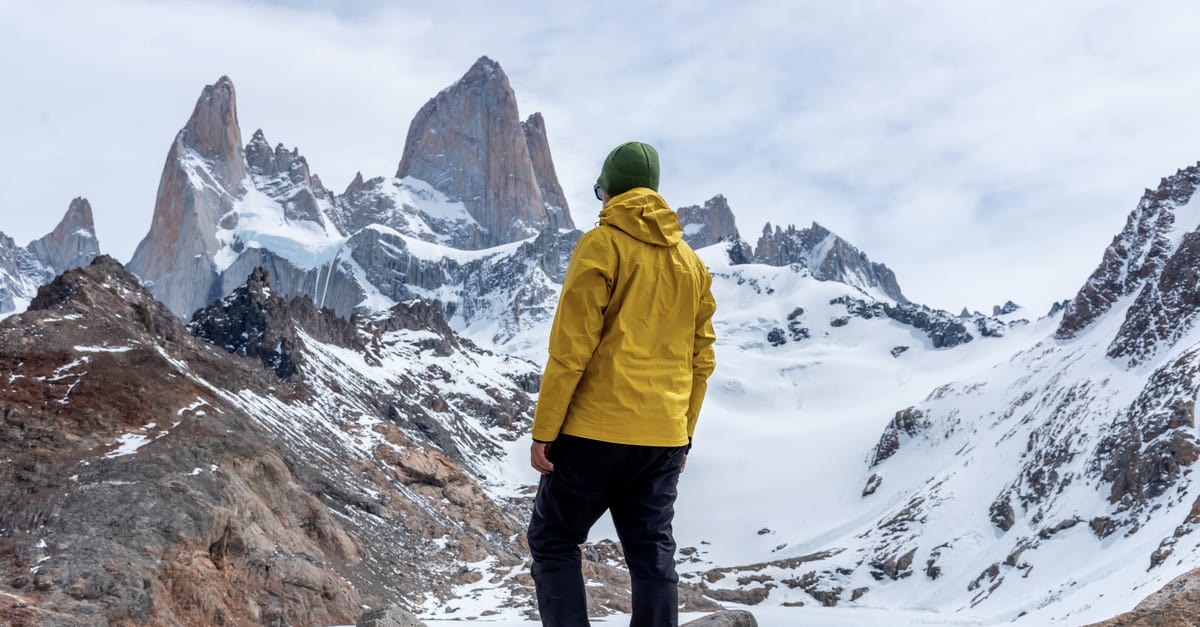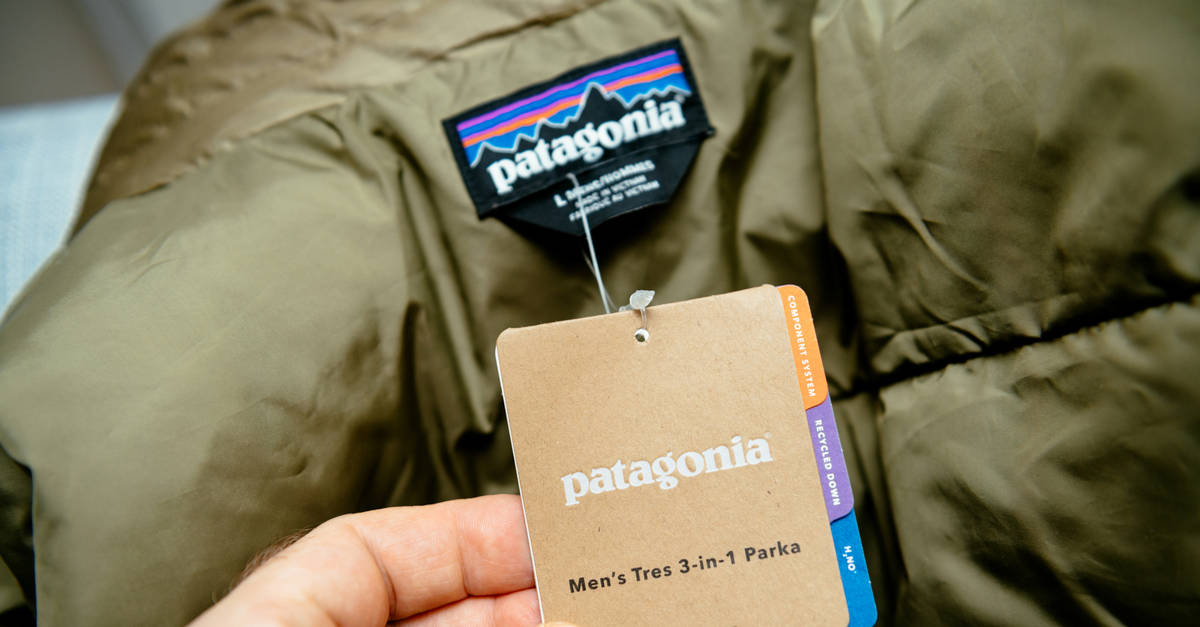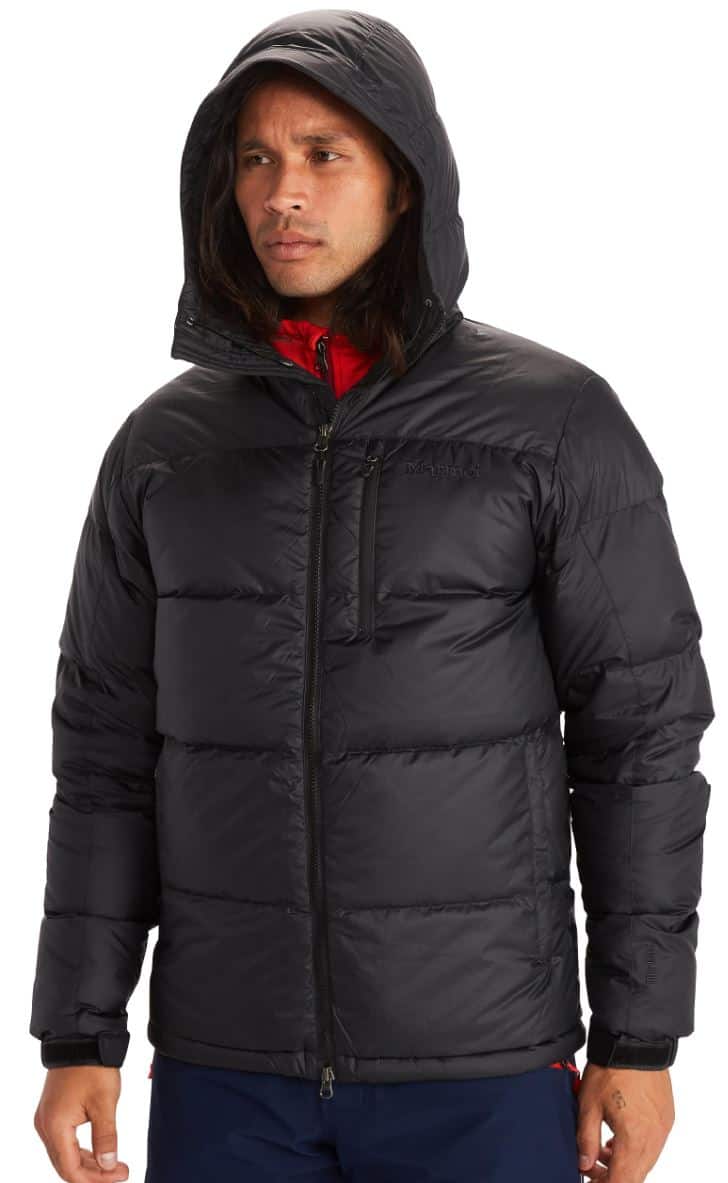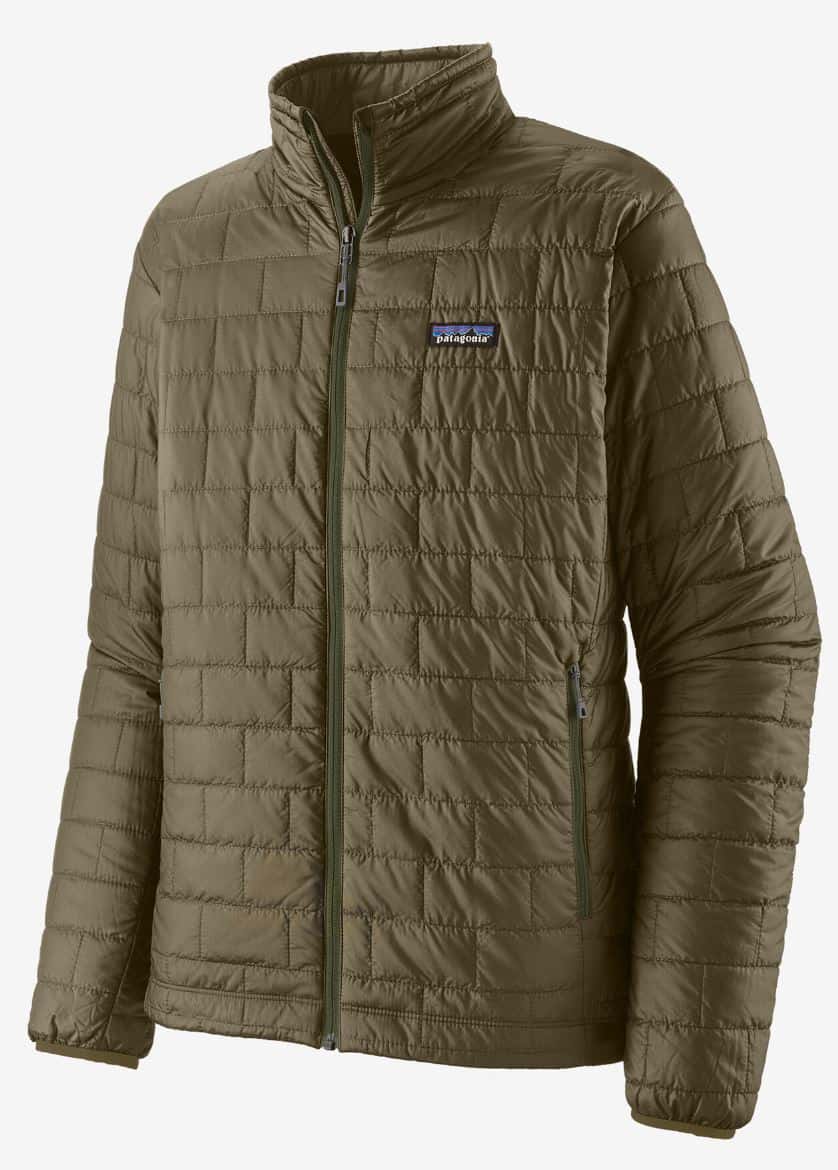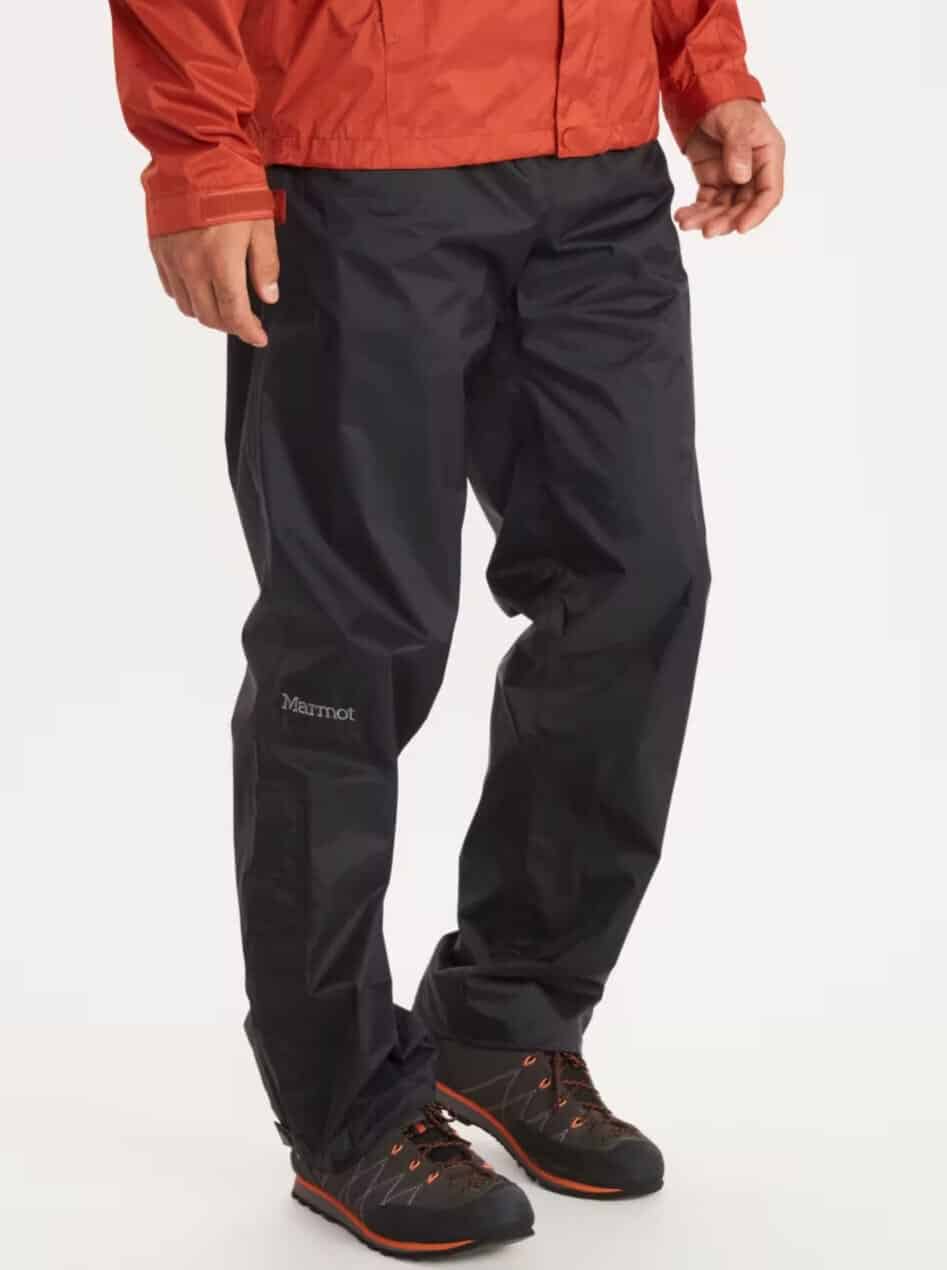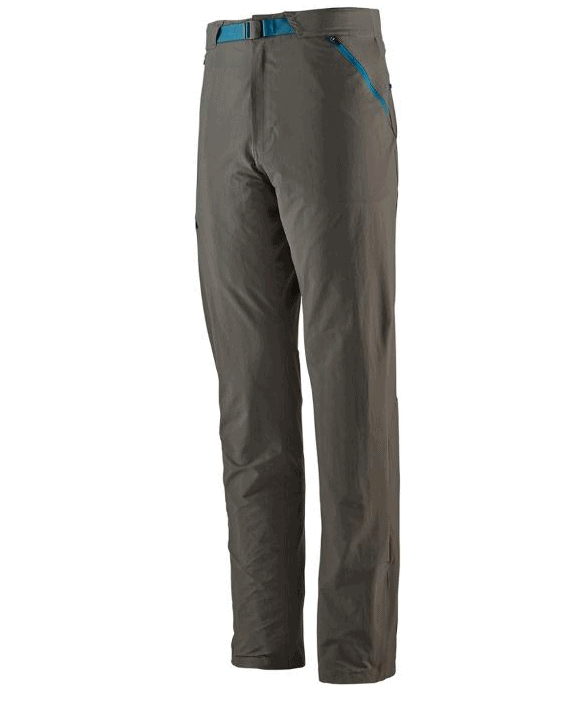You’re on an outdoor adventure, traversing miles of rough terrain and enjoying unforgettable sights and sounds. But suddenly, a strong wind appears and changes the atmosphere for the worse. What’s more important, you start feeling cold – your hiking jacket is not keeping you warm.
You’ve never expected a strong wind, but that’s just how it is. It’s windy now and you can’t do much about it. However, there is one thing that you can do – pay more attention when you’re shopping for your hiking apparel, footwear, and accessories.
The context remains the same whether we’re talking about trekking, traveling, or any other outdoor activities. If you’re serious about your escapades in the wilderness, you need valuable products from a reliable company, and this translates to garments, shoes, and sleeping bags that will keep you warm, safe, and comfortable.
And when it comes to well-known, reliable brands that manufacture these kinds of products, Marmot and Patagonia are definitely among the most famous ones. Who would be the winner of a battle called Marmot vs Patagonia? Our detailed comparison should help you find an answer to that question:
Marmot vs Patagonia – The History
Marmot
Just like many companies of this type, Marmot was also established by people who were outdoor enthusiasts themselves. Knowing the market from top to bottom, three friends called Eric Reynolds, David Huntley, and Tom Boyce decided to develop and sell genuinely high-quality products.
Back in the 1970s, Marmot initially sold things like sleeping bags, down vests, and sweaters, but also trained other people in the art of cross-country skiing. Obviously, over the course of time, Marmot started developing and selling many other products – it grew by leaps and bounds, so to say.
Nowadays, the company caters to a vast range of outdoor enthusiasts, offering all kinds of gear for activities such as ice climbing, alpine mountaineering, hiking, and camping. One particularly interesting fact is that one of Marmot’s very first sleeping bags, developed all the way back in 1974, was at the time the warmest sleeping bag you could buy. So, you can imagine how well-made and high-performing Marmot’s products are today, with all the advanced manufacturing technology they can (and do) use.
That being said, Marmot’s official website is very transparent and allows everyone to see all the technologies that the company uses. They have a solution to every issue, whether you’re in water, wind, heat, or cold, and that’s precisely what makes Marmot one of the most renowned brands in its industry.
Patagonia
Just like Marmot, Patagonia was also established all the way back in the 1970s. Its founder is Yvon Chouinard, an entrepreneur, surfer, mountain climber, and environmentalist (which is one of the reasons why Patagonia is one of the world’s most environmentally-friendly manufacturers of outdoor apparel).
Back in the 1950s, Yvon Chouinard (who is of French-Canadian descent) used scrap metal to make climbing pitons and then sold these to his very first customers. He worked on pitons and other climbing accessories in the garden garage of his parents – Yvon was always very keen on manufacturing stuff that could be of help to his fellow outdoor enthusiasts.
What is more, the chrome-molybdenum steel pitons that he was manufacturing became popular with the customers quite quickly. The reason behind their sudden popularity was that, unlike the product’s counterparts that existed back in the 1950s, these could actually be used more than once.
Besides the fact that it sells all types of hiking, running, biking, and climbing apparel and gear, Patagonia serves kitesurfing and fly-fishing communities as well. But still, their most popular products are jackets from their Rainshadow, Torrentshell, Nano Puff, and Micro Puff lineups.
Marmot vs Patagonia – The Overview
The Materials
Just like its rival, Marmot makes a lot of its products out of polyester and nylon. Another similarity with Patagonia is that they also care about their impact on the environment and are giving their best to reduce it.
They do this by focusing on natural ways of manufacturing apparel and gear and by using as few chemicals as possible during these processes. Marmot achieves some of its environmental protection goals by utilizing Evo Featherless technology (no direct bird-sourcing involved) and EvoDry technology (for chemical-free coating).
And these are just some of the technologies that Marmot uses while manufacturing its products. Most of these are openly mentioned on the company’s official website, as well as on the Amazon pages of their products.
Comparing Patagonia vs Marmot in terms of environmental activism is a difficult task, since the former races side by side with its rival in this regard. A large part of Patagonia’s catalog is made out of materials such as recycled polyester, recycled nylon, recycled cotton, etc. In fact, even the rubber that Patagonia uses for some of its garments is neoprene-free.
Those who’d like to know more about what kind of materials the company uses in the manufacture of their garments should definitely check out Patagonia’s Amazon page. There, you’ll be able to find out more about the brand and its philosophy.
The Quality
In the decades since its foundation, Marmot faced numerous business challenges. Once the initial popularity provided by the appearance of their jacket in the movie Eiger Sanction faded away, the company found itself struggling to remain relevant.
However, Marmot did remain relevant thanks to its core business philosophy – keeping the products as well-made as possible. Even when it reduced the prices of its products, Marmot never allowed the overall quality to decrease. The outdoor gear they design and sell today is just as good as it always was.
Out of these two brands, Patagonia is the one that’s a tiny bit better when it comes to environmental activism, but that does not hamper the quality of their outdoor gear in any way.
So, when it comes to the quality of the products they offer, these brands aren’t that different from each other. In other words, you won’t have to worry about getting wet while wearing a rain jacket made by either of these brands.
Similarly, in the realm of outdoor gear, there’s often chatter about the likes of L.L. Bean and Eddie Bauer. These brands, too, have their own set of loyalists and have been subjects of many a comparison, showcasing the diversity and range available in the market.
The Warranty
No Marmot, Patagonia, Columbia, or North Face jackets or any other of their products are perfect. With time, these things start to deteriorate, and that’s just unavoidable. And that’s precisely where the warranty comes into play.
As you may have expected, both Marmot and Patagonia provide warranty deals for their jackets and other products. In other words, they are ready to cover defects that are detected at the time of the product’s purchase.
The manufacturing warranty of both brands covers issues such as broken stitching, broken toggles, elastic hem cord problems, Velcro issues, as well as sticky or broken zippers. On the other hand, the manufacturing warranty of both companies does not cover things like UV damage, general negligence, modifications, and normal wear and tear.
Furthermore, both Marmot and Patagonia will provide service and repair of their jackets or any other products for a price. Once a customer sends his jacket to one of these two companies, they respond with an estimated price of repair. And if you agree to this price, your jacket, shoes, or sleeping bag will then be repaired and sent back to you in about 5 to 8 weeks.
The Popularity
While it’s true that both of these brands were founded back in the 1970s, Patagonia is the more popular one out of the two – it is as well-known as the North Face, which is the brand most people think of when someone mentions the term “a quality jacket”.
One of the primary reasons behind the company’s immense popularity is undoubtedly its ethos, as it never changed during the brand’s 50-year long history. Patagonia’s goal was always very clear – they set out to develop and sell a wide range of jackets and other products that won’t leave a massive carbon footprint behind.
We think that it’s pretty safe to say that a Marmot-made jacket almost always looks a bit more aesthetic than the one made by Patagonia, though. However, a lot of people find Patagonia’s vintage-looking jackets to be far more attractive.
Although we’ve said it already, Patagonia’s long-term mission of manufacturing environmentally friendly and sustainable products is definitely a major reason why a lot of people prefer this brand over Marmot. Whatever this company does, it does so while keeping sustainability in mind. It is undoubtedly the leading force in guiding the entire industry towards using recyclable materials and being more conservationist, which is incredibly important.
Popular Designs
In this part of the article, we’ll be comparing Marmot vs Patagonia by taking a closer look at a couple of popular products made by each of these two companies:
Marmot Guides Down Winter Jacket
Specifications:
- Weight: 1.37 pounds
- Insulation: 700 fill power down
- Shell: Ripstop polyester (100%)
A jacket made by Marmot is almost always a high-quality jacket. Can the same be said for their Guides Down Winter model? In our opinion, yes, it can – it’s a well-insulated jacket with a hood that can and will protect you from the cold during your winter hikes.
And when it comes to the insulation, this jacket is insulated with 700 fill power down. As you can already guess, this provides the wearer with an optimum amount of warmth. And due to the fact that the down used in this jacket provides such a fantastic performance, there’s not a lot of it – the Guides Winter Jacket is quite lightweight (the weight stands at just 1.37 pounds). Another important thing to mention here is that this jacket is also relatively water-resistant (not waterproof) since its down insulation was treated with the so-called Down Defender.
Without this special treatment, the clusters of down in this high-quality jacket would simply clump up once they would come into contact with water and become wet. And, unlike synthetic insulation, down is incapable of retaining warmth once it’s wet and becomes pretty much useless.
The Down Defender treatment can’t make a jacket waterproof, but it certainly makes it water-resistant to a degree (it will protect you from light rain). The Guides Down Winter Jacket also sports a DWR coating on its outer shell, but this still won’t protect you from heavy downpours – if you’re looking for genuine rain protection, you’ll need a genuine rain jacket, such as, for example, the Torrentshell model made by Patagonia or the Venture 2 jacket made by the North Face.
Another thing worth mentioning here is that this jacket is quite comfortable (its hood is particularly comfy), although the coziness it offers comes at a price – it feels quite bulky, even despite its low weight. If you want to wear a jacket that is thick and fluffy, you can’t really go wrong with this one. However, those looking for jackets that are exceptionally lightweight but can still keep their users very warm are better off with jackets made by Patagonia.
Both the drawcord and the hem of this jacket are fully adjustable. And when it comes to pockets, this jacket has four of them – three external (two of which are the hand pockets) and one internal pocket. The two hand pockets are actually quite deep and come with their own zippers, so it’s pretty safe to call them handwarmer pockets. And, as we said, the hood is very comfortable and provides extra protection in cold weather.
PROS:
- Great value for the money
- Well-insulated and warm
- DWR coating on the shell
- Comfortable hood
- Adjustable cuffs & hem
CONS:
- Feels bulky despite low weight
- Not the best choice for wet weather
Patagonia Nano Puff Jacket
Specifications:
- Weight: 11.9 oz
- Insulation: Synthetic – PrimaLoft Gold Eco
- Shell: Ripstop recycled polyester (100%)
When someone says “Patagonia jacket”, most people think of either the Nano Puff model or the Torrentshell jacket. The former model is among the company’s best insulated jackets and a pretty good choice for outdoor enthusiasts looking for something that will keep them warm and cozy even in wet weather.
Here, there’s no “fill power” – this jacket features synthetic insulation. The specific insulation used in its manufacture is PrimaLoft Gold Eco. Behind this curious name hides an extremely good synthetic insulation made out of recycled materials, and one that will allow you to wear this jacket in rainy and cold weather without any worries – it is capable of retaining almost 100% of warmth even when it’s wet.
Just like the Patagonia Torrentshell jacket we’ve mentioned above, this model also sports a DWR coating (and comes at a similar price point, too). In light and even mild rain, the jacket’s fabric keeps the user warm and dry by repelling moisture. And while the DWR coating isn’t really that useful in downpours, this jacket’s insulation still works pretty well even in heavy rain.
Another similarity with Patagonia’s famous Torrentshell jacket is that this model is also very packable and lightweight. If portability is really important to you, you’ll be pleased to know that Nano Puff packs down into its own pocket. This also means that you can easily pack this jacket into the pocket of another jacket, and thus always have a warm mid-layer at hand.
In total, Patagonia Nano Puff has three pockets. These are the zippered internal pocket and two regular, external pockets. The internal pocket is the one you’ll use as a stuff sack, and it’s also the one that comes equipped with a clip-in loop.
Finally, this fantastic Patagonia jacket comes at a relatively reasonable price. While it’s not as stormworthy as the Torrentshell model made by the same company, it’s not as expensive as the similar option offered by Marmot and stands as a very good deal for all those who need a lightweight, waterproof mid-layer. Our only major complaint is that it comes without a hood.
PROS:
- A lightweight & packable mid-layer
- The jacket retains warmth in wet weather
- Durable & waterproof material
- Well-thought-out pockets
- Reasonable price
CONS:
- No hood
- No storm flap
Marmot PreCip Eco Pants
Specifications:
- Size Variety: S-XXL
- Fit: Regular fit
- Material: NanoPro breathable/waterproof fabric
Are you looking for a pair of breathable, waterproof pants? If that’s the case, the PreCip Eco pants made by Marmot are undoubtedly among your best options. The product is made out of the company’s patented NanoPro fabric (which itself is made out of recycled nylon) and, as such, it features better breathability and water resistance than most regular nylon pants. In fact, the PreCip Eco is a completely waterproof piece of apparel – it provides a phenomenal performance in wet weather.
One of the product’s most important features in this regard is the fact that it comes seam-sealed. In other words, the moisture simply has no way of getting inside of it. And even despite this construction, the PreCip Eco pants are quite breathable. You’ll have nothing to worry about if you often sweat a lot in the pants – these dry out very, very quickly. In our opinion, this is a very impressive achievement for a pair of pants that don’t use Gore-Tex technology and a major point for Marmot in the battle called Marmot vs Patagonia.
Another great thing about the PreCip Eco pants is that they’re equipped with snap buttons at the cuffs and zippers on the lower legs. These features will allow you to wear these pants over heavy boots. We also liked the presence of three pockets, all of which have their own zippers. One is on the back of the pants and two are on the front of it, allowing you to easily carry all of your essentials.
With these Marmot pants, a good fit is guaranteed – the PreCip Eco features an elastic band. However, the model features no belt loops. This is why it’s vital that you get them in the size that suits you, as you won’t be able to adjust the width of the waist.
As far as we’re concerned, the only major downside of these Marmot pants is that they offer no inseam length variety. In other words, the PreCip Eco is available in only one length. This can be a pretty major downside to all those looking for a pair of paints with an ideal fit, particularly if we take into account the fact that they can’t be tailored because of the cuffs and zippers at the legs. But still, the PreCip Eco is among the best pants made by Marmot and an excellent choice if you need something waterproof and breathable.
PROS:
- One of the best products of this type on the market
- Excellent performance in wet weather
- Breathable, moisture-resistant material
- Equipped with three zippered pockets
- Works great with an under-layer
CONS:
- Not compatible with belts
- No inseam length variety
Patagonia Causey Pike Pants
Specifications:
- Size Variety: Waist sizes from 28 to 40
- Fit: Slim fit
- Material: 5% spandex, 95% nylon
Patagonia’s answer to Marmot’s PreCip Eco pants is called Causey Pike Pants. These are made from a special spandex & nylon fabric that features a 4-way stretch, and, as such, provides wearers with increased freedom of movement. This is a very important feature once we take into account the fact that these are slim-fitting pants, and this type of pants is often quite restrictive.
The Patagonia Causey Pike Pants allow its user to adjust the width of the legs. You can do this by using the model’s side zips, which are located at the ankles and allow you to make the trouser legs a bit wider. And, as you can already guess, this feature also makes it quite easy to wear the Causey Pike Pants over bulkier boots. Unfortunately, it also means that having these pants tailored or shortened isn’t that easy.
Comparing Patagonia vs Marmot in terms of pant lengths shows us that Patagonia is a clear winner in this category. Even though the Causey Pike Pants can be obtained in only two different lengths – regular and short – that’s still one length more than in the case of Marmot PreCip Eco pants. But still, if you’re someone who wears tall pants, you’ll probably have to go with another product as these won’t provide you with a good fit.
There are also a couple of other features that contribute to the model’s status of a winner in the Marmot vs Patagonia pants comparison. These include bells and whistles such as the articulated knees, belt loops, and the gusseted crotch. In addition, these Patagonia pants feature DWR coating and UPF protection. However, they’re not as good as the Marmot pants when it comes to wet weather protection – in terms of moisture resistance, Marmot PreCip Eco is the clear winner of the comparison.
In addition to all of the above, these pants come equipped with four pockets. There is one pocket on the right thigh, one on the back, and the remaining two are the regular front hand pockets. Of course, all of these pockets are zippered – you’ll never have to worry about losing the items you decide to carry in them instead of inside your bag.
PROS:
- One of the best pants made by this brand
- Adjustable width of the legs – ankle side zips
- Non-restrictive despite their slim-fit design
- Protect against harmful UV rays
- Equipped with four zippered pockets
CONS:
- Only two length options
- Not as water-resistant as Marmot pants
Marmot vs Patagonia – The Verdict
At the end of the day, we don’t think there’s a real winner in the battle called Marmot vs Patagonia. The latter is the more famous of the two (as well-known as the North Face, like we said), but Marmot has certainly evolved over time and is now becoming the favorite brand of many outdoor enthusiasts all over the world.
What about the products we’ve analyzed in this article? Let’s move one thing out of the way first – if you’re looking for a good rain jacket, the battle of Marmot vs Patagonia has a clear winner, and that’s Patagonia. The Torrentshell jacket, which we have mentioned a couple of times throughout this article, is probably the best jacket of its type available on the market, rivaled only by some expensive North Face and Arc’Teryx jackets.
All four products made by each brand are great in their own ways – there’s no doubt about that. However, when it comes to jackets, we think that the Nano Puff, made by Patagonia, is a slightly better choice than the model made by Marmot. While it’s true that none of these models feature Gore-Tex technology, the jacket made by Patagonia is the one you’ll want to carry in your bag if you need some serious rain protection.
Comparing Marmot vs Patagonia in terms of pants puts the former brand on the pedestal. Even without using Gore-Tex technology, Marmot has managed to create a pair of pants that is both completely waterproof and breathable at the same time, which is a seriously impressive feat.

I love hiking, backpacking, and camping. From the Camino de Santiago to the West Highland Way in Scotland or simply a great day hike on the weekend. Hiking refreshes me, my mind, and keeps my body reasonably fit. So far I have walked three Camino routes and many other long distance hikes in the UK, Canada, and around the rest of Europe. One of the best was my hike up Ben Nevis.


